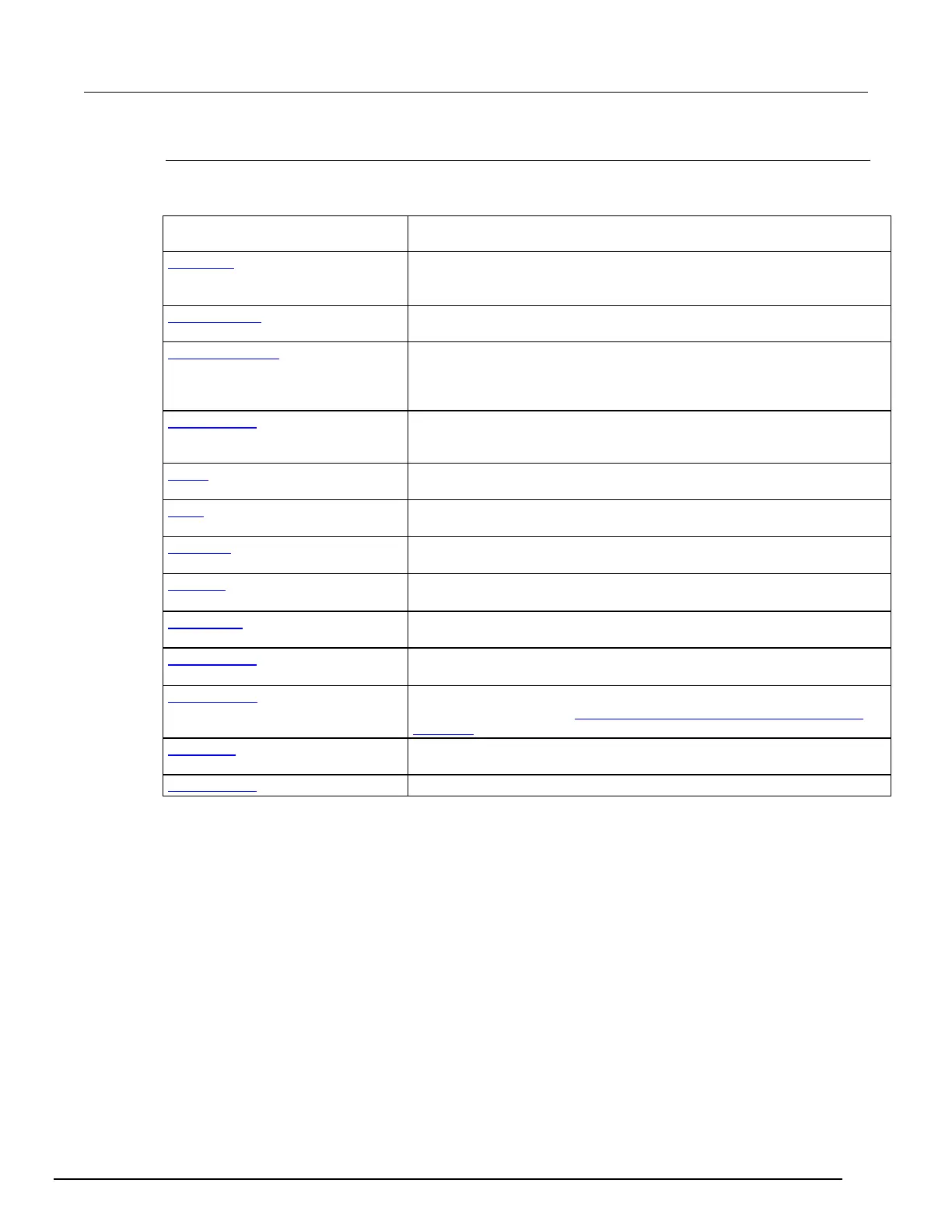-SCS Parameter Analyzer Reference Manual Section 6:
4200A-901-01 Rev. C / February 2017 6-97
PMU Test Settings
The settings that are available for PMU tests are briefly described in the following table. Select the
links to access additional information.
Parameter Description
Select Pulse IV to make spot mean measurements (V or I) of the amplitude
or base portions of one or more pulses. Select Waveform Capture to sample
the entire waveform.
Measure Mode (on page 6-99)
Select Average Pulses to average the measured values of two or more
pulses. Select Discrete Pulses to report the measured value of each pulse.
Number of Pulses (on page 6-101)
The number of pulses for the PMU channel to output and measure for each
step in the sweep (1 to 10,000). If you enabled autorange, load-line effect
compensation (LLEC), or thresholds, the number of pulses is output multiple
times for each step in a sweep.
Timing Sweep (on page 6-101)
For Sweep and Step, select None, Period, Width, Rise Time, or Fall Time.
This is only available if the Operation Mode is set to either pulse sweep or
The pulse period is the time interval between the start of the rising transition
edge of consecutive output pulses.
The pulse width is the interval between the rising-edge and falling-edge
medians.
Rise Time (on page 6-103)
The rise transition time for the pulse output.
Fall Time (on page 6-103)
The fall transition time for the pulse output.
Pulse Delay (on page 6-103)
The pulse delay is the time interval between the start of the rising pulse
edge of the trigger output pulse and the output pulse.
Settling Times (on page 6-104)
The settling time is the time that it takes for pulse levels to stabilize after the
voltage or current is changed, such as during execution of a sweep.
Sweep Master (on page 6-105)
Designates which instrument is the master if there are multiple steps or
sweeps in a test. Refer to Step or sweep multiple device terminals in the
same test (on page 6-144) for detail.
Formulator (on page 6-222)
The Formulator allows you to make data calculations on test data and on
the results of other Formulator calculations.
Output Values (on page 6-87)
Select values that are included in the Analyze sheet.
Test Mode (PMU)
The Test Mode selects the type of pulse test. You can select:
• Pulse IV: This test mode performs spot mean measurements (V or I) of the amplitude or base
portions of one or more pulses. Typically, current versus voltage is graphed in the Analyze graph.
The pmu-iv-sweep project provides an example of a pulse drain family of curves using the
pulse test test mode.
• Waveform Capture: This test mode samples the entire waveform. The waveform is graphed
(voltage and/or current versus time) in the Analyze graph. The pmu-1ch-wfm project provides an
example of a waveform capture. Note that the Timing Sweep Step option (in the Advanced dialog
box) is disabled when Waveform Capture is selected.

